Are you one of those teachers who has or wants to dip their toes in the project-based learning pond? Perhaps the current method you are using just isn’t working for you. You know you want to try project-based learning, but you want to make sure you start it on the right foot.
I completely understand! I was one of those teachers who was constantly changing up my teaching strategies, only to cause chaos and confusion for my students. That’s why I’m here to share my #1 tip on how to start project-based learning. I may also sprinkle in a couple of freebies, so be sure to keep reading!
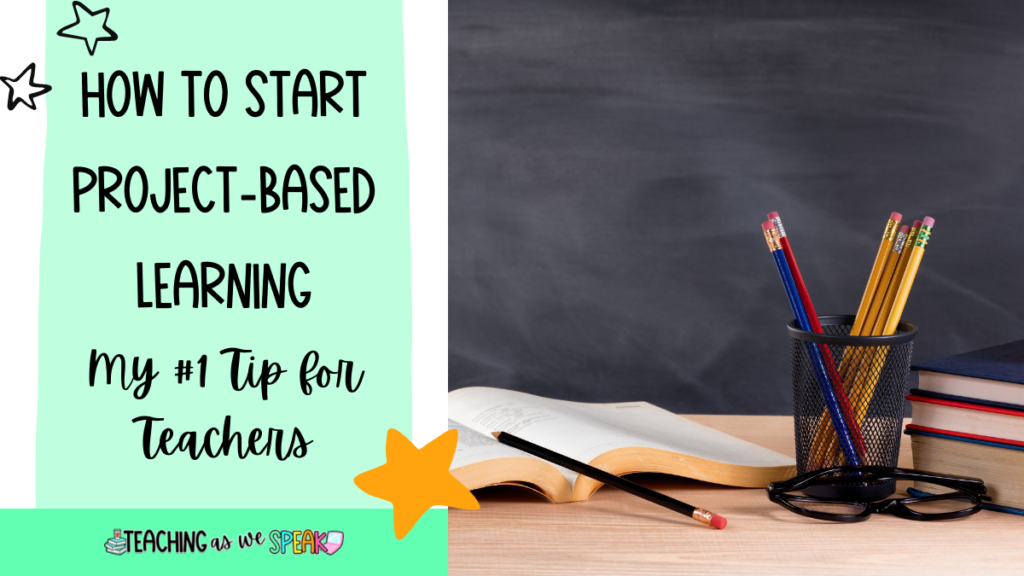
Before I share my #1 tip on how to get started with project-based learning…
I first want to reassure you that starting project-based learning is one of the best decisions you can make for yourself and your students. Here are a few reasons why…
Project-based learning will:
- Prepare students better for “real life”-click here to read my recent blog post titled “4 Business Project Ideas for School-How to Teach Career Skills Through PBL”
- PBL teaches students about personal and social responsibility
- It helps with more authentic assessments
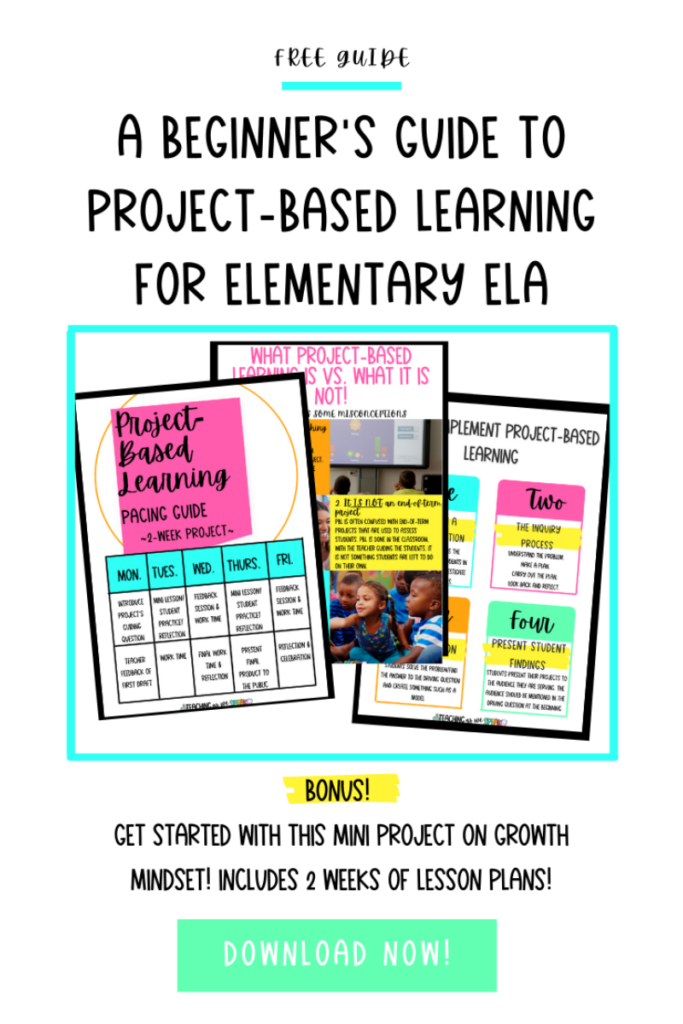
Click here to read my post “Why Project-Based Learning is Taking Over”
How to Start Project-Based Learning-My #1 Tip for Teachers
Ready? Here it is… Don’t start!
At least, not yet!
While many teachers choose to dive right into the world of project-based learning, I suggest taking your time. One of the reasons project-based learning fails in classrooms is because teachers didn’t take enough time preparing students (and themselves) for the changes it will bring to the overall structure of the classroom.
PBL is great because it helps students improve in many “soft skills”. These skills include:
- Problem-solving
- Critical thinking
- Creativity
- Curiosity
- Decision-making
- Leadership
I would argue that students need to already have some of these skills in place, or at least be aware of them before jumping into a new project. That’s why I suggest spending time developing some of these habits with students before starting a project.
Click here to download Project-Based Learning and Soft Skills: The Complete Guide for free now!
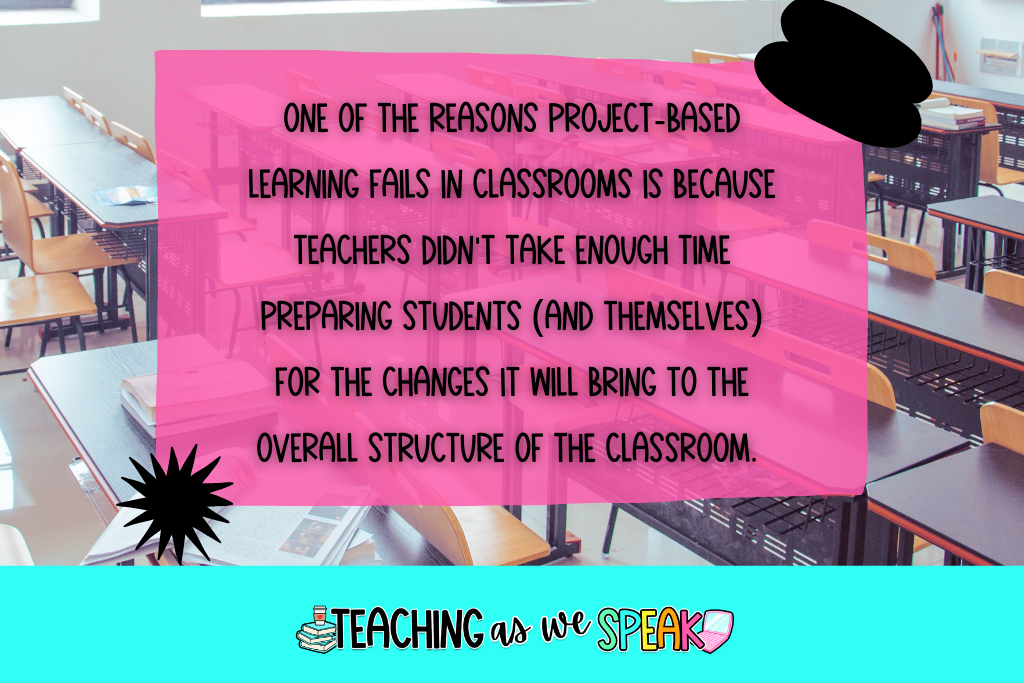
To begin these habits, I suggest starting with something authors Gary Keller and Jay Papasan called your “lead domino”. This is a small habit that will lead to big, impactful changes.
So start by asking yourself, why do you want to start project-based learning? Is it because your students need to improve in critical thinking? Or do they need to be better team members?
- Start by choosing one soft skill.
- Next, think of one small daily habit that can lead to bigger changes down the line.
For example, let’s say my students need to be better at asking questions. When researching a topic, they don’t dig deep enough.
So what can I have my students do every day that, by doing so, will make them better at asking questions? Here are a few examples:
- They could pose a question about an image I display each morning when they arrive at class
- Students could think of one question to ask the person next to them each morning. Click here to check out my discussion starter task cards
- Each student could write one question they would like to ask me on a piece of paper and drop it in a box at the end of each day
- Students could complete a logic puzzle after they have finished their classwork
Starting small habits like these is a great way to help warm up the soft skill muscles they will surely be working on when immersed in project-based learning.
I suggest spending a couple of weeks warming up to project-based learning before starting.
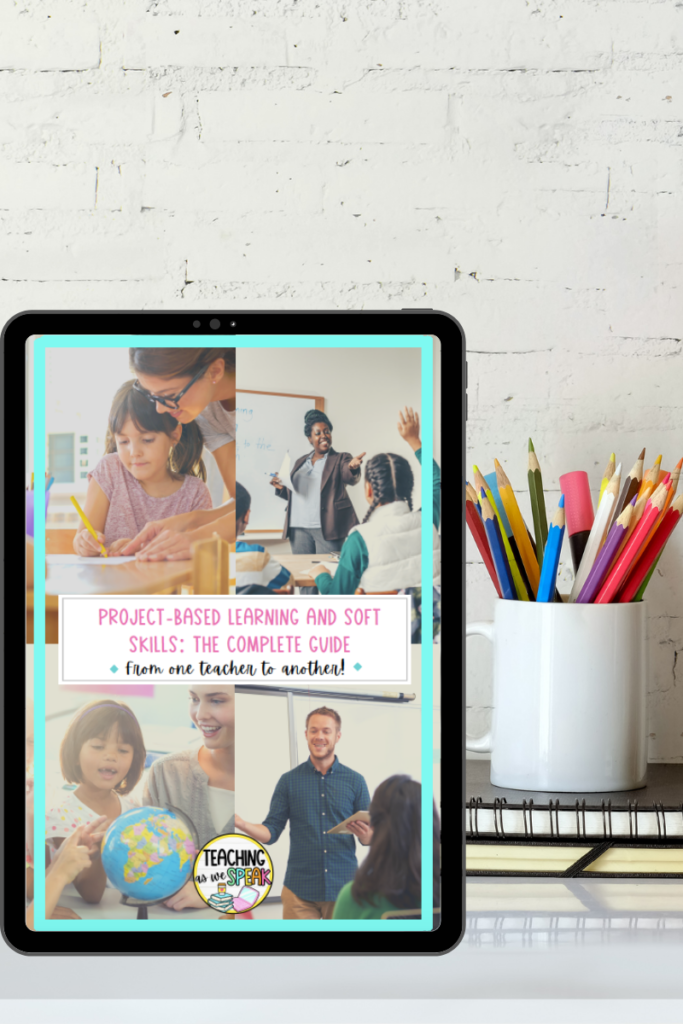
Click here to download Project-Based Learning and Soft Skills: The Complete Guide for free now!
When you ARE ready to start…
When the time comes you are ready to begin a project with students, I suggest starting small. Don’t choose a month-long project to start.
It’s better to choose a 1-2 week project for students to get used to the structure. In my Beginner’s Guide to Project-Based Learning, I include a 2-week project in which students answer the question “what does a growth mindset look like?”. In the project, students create a quiz that students and teachers at the school can compete to see whether they have a growth mindset or not. Click here to download the free guide and project now!
The most important aspects of PBL for students to get used to at the beginner are…
- The flexibility and how to stay on-task and
- How to research
- The class rules when collaborating
- How to give feedback
- The work ethic/accountability
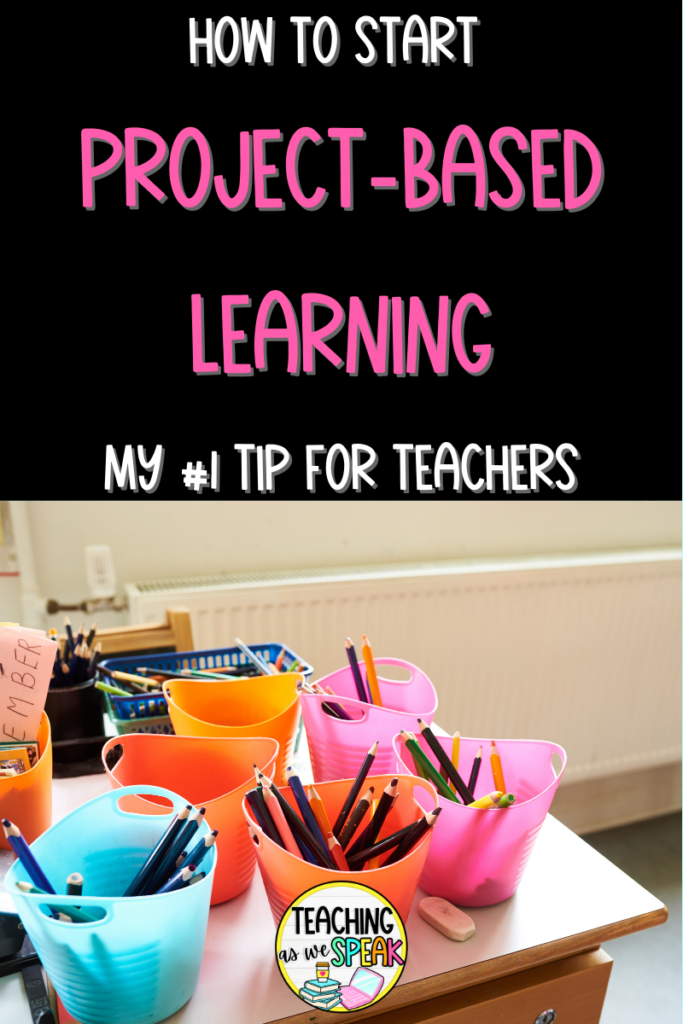
Download the free Beginner’s Guide to Project-Based Learning now!
Final Thoughts
Whether you decide to start slow or dive right into the world of project-based learning, I strongly suggest taking the time as the teacher to think about how you are going to roll out this teaching method in your way and in a way that makes sense to your students.
How to start project-based learning depends and what feels right to you!
Click here to download the freebies mentioned in this post:




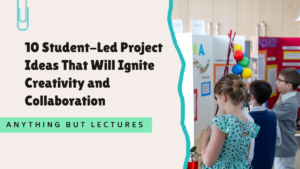
2 thoughts on “How to Start Project-Based Learning-My #1 Tip for Teachers”